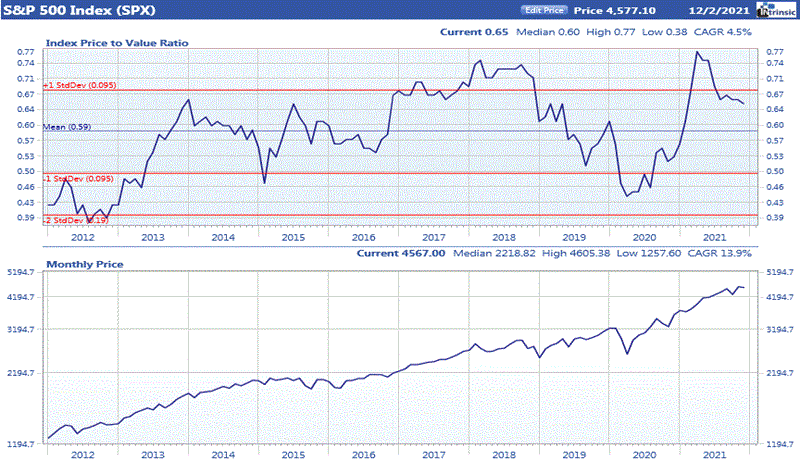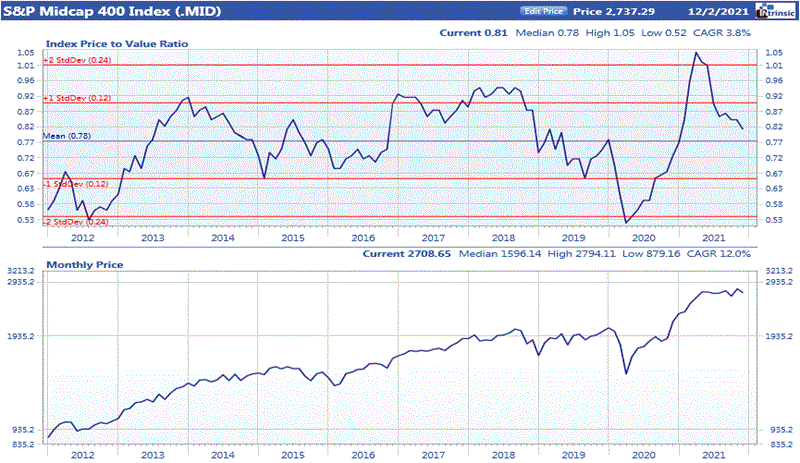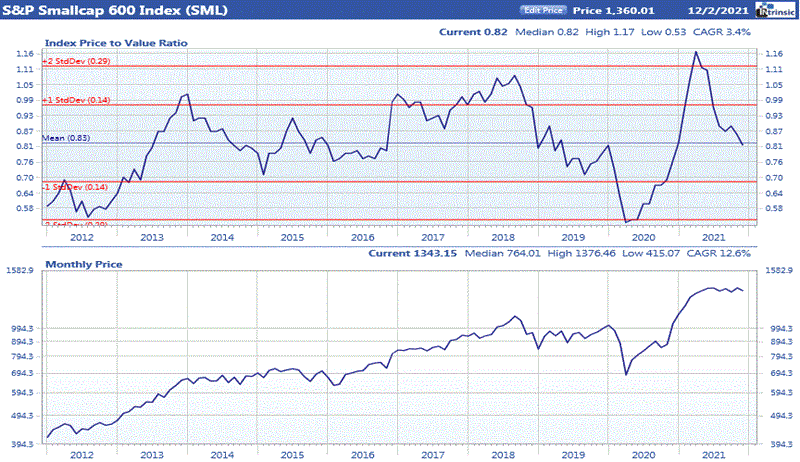Market Briefing
December 2021
Equity indexes declined in November. However, large cap stocks continued their recent outperformance relative to mid and small cap stocks. Economic news headlines were mostly positive for the month. The payroll report for October was strong leading to an unemployment rate of 4.6%. Manufacturing and non-manufacturing indexes continued to indicate expansion. Inflation continued to remain high with CPI reaching the highest level in many years. Retail sales advanced in October. Existing and new home sales reports were both moderately higher. An approximately $1 trillion infrastructure bill was passed and signed into law. A new pill-form treatment for Covid showed positive trial results. However, the identification of a new variant of the virus spooked the market toward the end of the month. Investors favored a combination of growth and value stocks in November. Short-term earnings per share and sales growth were the top performing selection factors. P/e ratio, operating earnings yield, and price/cash flow also performed well. Ford’s value/momentum model which combines valuation and growth factors also had good results for the month. Interestingly, momentum and some growth measures were the biggest underperforming selection factors in November. With the broad selloff, less than one quarter of the industry groups we cover had positive average price changes for the month. Some of the best performing groups were mobile homes, forest products and semiconductors. The energy sector reversed from the strong performance in the prior month. The oil sector and coal were among the weakest groups. In addition, healthcare groups including medical supplies, medical services and drugs were near the bottom of the industry performance ranking.
Value of the Market



Ford’s price to value ratio (PVA) is computed by dividing the price of a company’s stock by the value derived from a proprietary intrinsic value model. A PVA greater than 1.00 indicates that a company is overpriced while a PVA less than 1.00 implies that a stock is trading below the level justified by its earnings, quality rating, dividends, projected growth rate, and prevailing interest rates. While looking at the PVA for an individual company can give a good indication of its value, the average PVA for the market as a whole can provide insight into current valuation levels.
Source: Ford Equity Research
